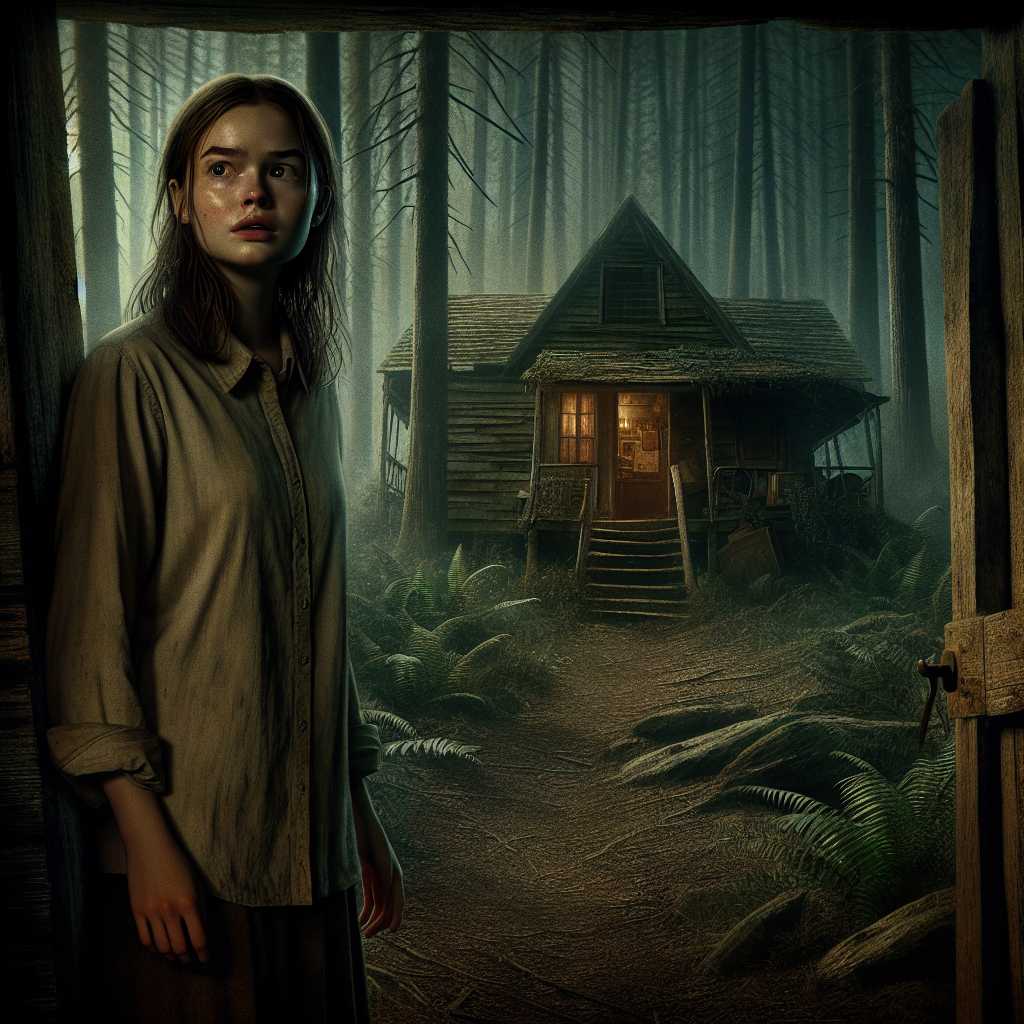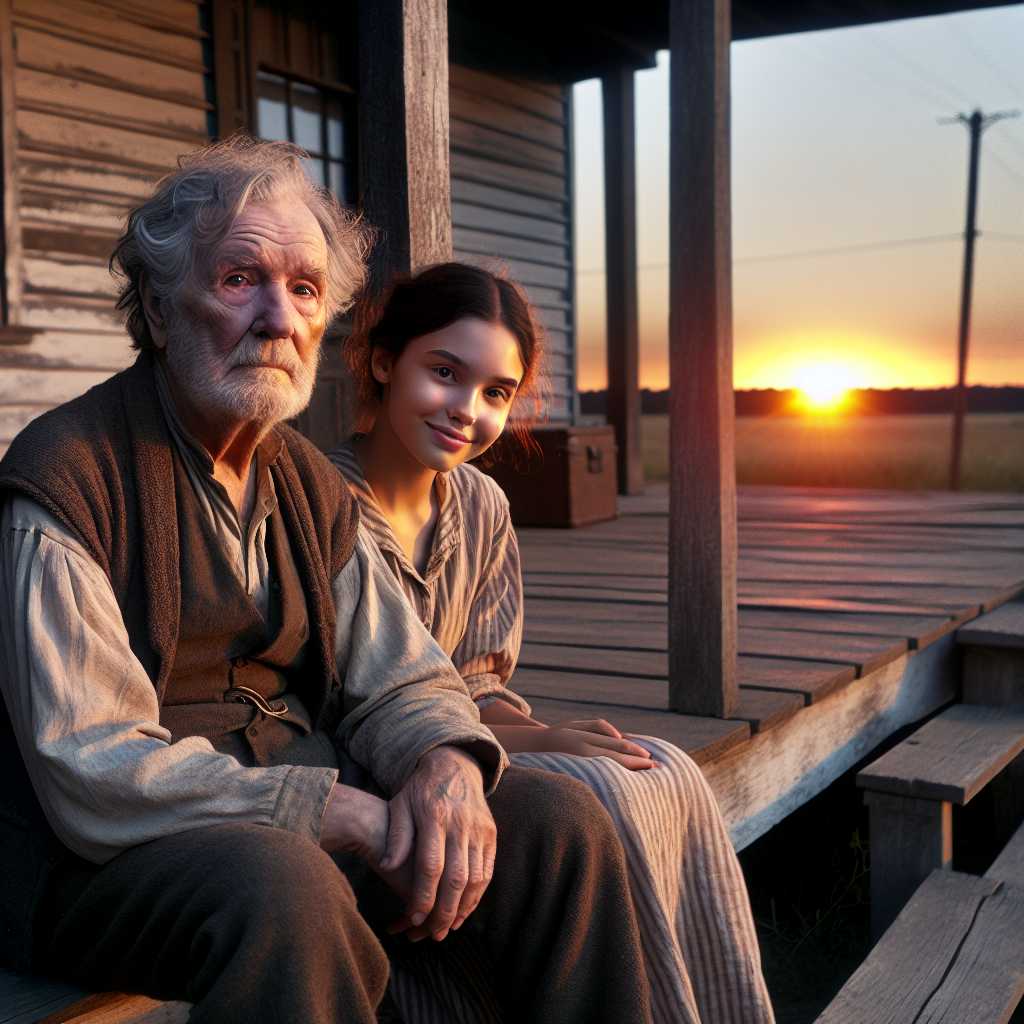
In the heart of a sleepy village, surrounded by dense thickets and whispering willows, stood the enigmatic Elmwood House. Its towering facade and faded grandeur loomed over the villagers with an air of mystery that piqued countless imaginations. Old legends spoke of secrets hidden deep within its creaking walls, tales that had woven themselves into the fabric of the village's folklore.
Becoming the custodian of Elmwood House meant inheriting not just its sprawling corridors, but also its whispered history. This was the fate that befell young Emily Graves, the last of the Graves lineage. An aspiring writer, Emily arrived one blustery autumn evening, her heart a curious blend of anticipation and unease. Her dreams were of stories spun from the languid shadows of the ancient house.
"There's a story in every stone," her grandmother had once told her, "if only you'd care to listen."
Emily remembered those words vividly as she stood by the gate, gripping her leather-bound notebook, a gift from her grandmother. The air was thick with the scent of fallen leaves and rain-soaked earth. As Emily pushed open the wrought-iron gate, it uttered a sorrowful creak, a sound that resonated through the chilly evening air.
By the time she entered the grand foyer, night had cast its inky shadows across Elmwood. Emily switched on the lights, illuminating chandeliers that once dazzled illustrious guests. Dust danced in the beams, a forgotten ballet of time. Her footsteps echoed forlornly, matching the somber rhythm of the house's weary heart.
She spent the following weeks wandering through the house, seeking inspiration. Most rooms whispered their stories freely, but it was the library that captivated her most fiercely. Rows of leather-bound tomes filled the shelves, each spine a gateway to distant worlds. Yet, it wasn't these books that drew her attention, but rather a manuscript resting alone on a desk, its pages yellowed with age.
Intrigued, Emily unfurled the emotional tapestry woven by the manuscript, one that spoke of forbidden love and shattered dreams. It was a tale of two lovers, Amelia and Edward, whose romance swam against the torrents of societal scorn and familial disapproval. They had met secretly under the very eaves of Elmwood House.
Amelia wrote:
"Our love is a specter dancing through the alleys of our dissent. In darkness, we are safe. In love, we are free."
The more Emily read, the more she became entangled in the narrative, as if their lives had seeped into her own reality. She could almost hear Amelia's laughter echoing down the corridors and feel Edward's presence in the cold drafts that spiraled through the house. It was as if they were waiting to tell her something profound, something unfinished.
Driven by curiosity, Emily sought the guidance of Old Mrs. Thatcher, the village historian and a woman reputed to know every thread of Elmwood's past. Over a cup of fragrant chamomile tea, Mrs. Thatcher regaled Emily with the history lost in time, her voice a raspy whisper that seemed to resonate with an eerie authority.
Mrs. Thatcher intoned,
"Amelia was a daughter of nobility, and Edward, the gardener's son. They were doomed from the start by the shackles of class. When they were discovered, Amelia was banished, and Edward vanished, leaving a hollow despair in his wake."
Emily felt a chill sweep through her as Mrs. Thatcher laid it bare. The conclusion of the tale remained as shadowy as the corners of Elmwood House. Stories faded to myth, and yet—there seemed to be more behind the veil.
Galvanized, Emily returned to Elmwood, driven by the need to uncover the unwritten ending. She began examining the manuscript with a renewed fervor, searching for overlooked details or hidden messages. Late one December night, when frost had laid its crystalline hand over the grounds, Emily stumbled upon a hidden fold in the manuscript. Her heart stuttered with anticipation.
Inside was a letter from Edward, stained with tears, addressed to Amelia:
"My dearest, if life were but kind, we'd never have hidden in shadows. If love transcends, then in this world or the next, you'll find me waiting."
The words, resonant with untold longing, gripped Emily with an inexplicable swell of emotion. It was as if their love echoed through time, refusing to erode into history's dust. Inspired and overcome with passion, she wrote. Her pen danced with their story, unfurling the fibers of fate they never lived to see weaved together.
Weeks later, with the manuscript completed, Emily wandered to the attic, a place she'd always found unnervingly curious. By sheer accident—or perhaps the intervention of lovers long departed—she stumbled upon a dusty cardboard box. Inside lay old letters and keepsakes that once belonged to her ancestors.
Among them, Emily found a photograph, cornered in fading lace. It was of two young lovers standing under the eaves of a bygone Elmwood—a woman with Amelia's wild eyes and a man who bore more than a passing resemblance to Edward. In Edgar's handwriting: "In love, all things find their resolution."
Tears welled up as Emily cradled the photograph, a profound gratitude flooding her heart. She knew then that they had guided her through whispers of the past so their story could finally be brought to light. Elmwood House could rest easy, its echoes finding solace in her written words.
As Emily sat, the morning light painted the ancient walls with a warmth infused by the ages. With her manuscript complete and the spirit of Elmwood at peace, Emily felt an enigmatic tranquility. The house, once a solemn guardian of unwritten pasts, had finally surrendered its secrets. She closed her notebook with a soft sigh, a testament to an unforgettable journey.
And in that silence, Elmwood House breathed anew, as a tale told, heart finally fulfilled.










